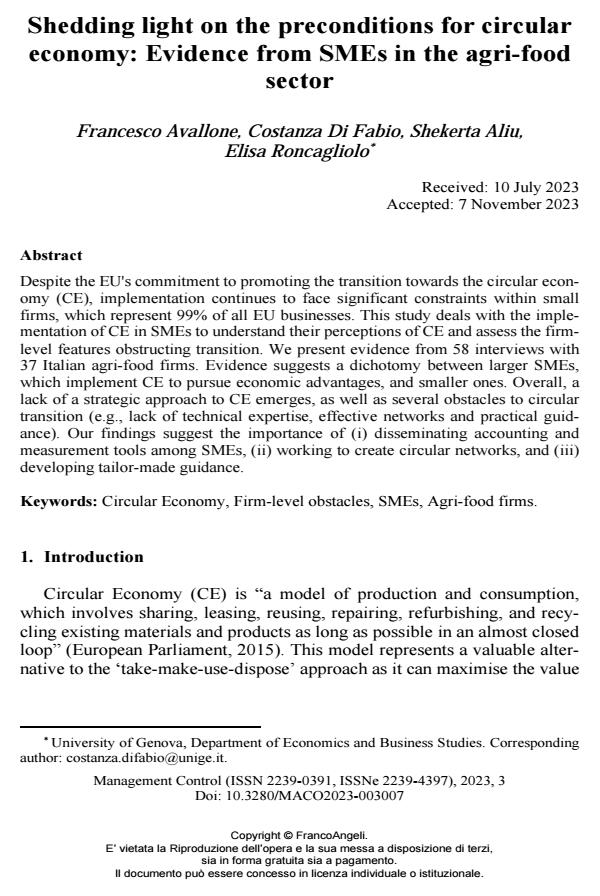Shedding light on the preconditions for circular economy: Evidence from SMEs in the agri-food sector
Titolo Rivista MANAGEMENT CONTROL
Autori/Curatori Francesco Avallone, Costanza Di Fabio, Shekerta Aliu, Elisa Roncagliolo
Anno di pubblicazione 2024 Fascicolo 2023/3
Lingua Inglese Numero pagine 23 P. 141-163 Dimensione file 352 KB
DOI 10.3280/MACO2023-003007
Il DOI è il codice a barre della proprietà intellettuale: per saperne di più
clicca qui
Qui sotto puoi vedere in anteprima la prima pagina di questo articolo.
Se questo articolo ti interessa, lo puoi acquistare (e scaricare in formato pdf) seguendo le facili indicazioni per acquistare il download credit. Acquista Download Credits per scaricare questo Articolo in formato PDF

FrancoAngeli è membro della Publishers International Linking Association, Inc (PILA)associazione indipendente e non profit per facilitare (attraverso i servizi tecnologici implementati da CrossRef.org) l’accesso degli studiosi ai contenuti digitali nelle pubblicazioni professionali e scientifiche
Despite the EU's commitment to promoting the transition towards the circular economy (CE), implementation continues to face significant constraints within small firms, which represent 99% of all EU businesses. This study deals with the implementation of CE in SMEs to understand their perceptions of CE and assess the firm-level features obstructing transition. We present evidence from 58 inter-views with 37 Italian agri-food firms. Evidence suggests a dichotomy between larger SMEs, which implement CE to pursue economic advantages, and smaller ones. Overall, a lack of a strategic approach to CE emerges, as well as several ob-stacles to circular transition (e.g., lack of technical expertise, effective networks and practical guidance). Our findings suggest the importance of (i) disseminating accounting and measurement tools among SMEs, (ii) working to create circular networks, and (iii) developing tailor-made guidance.
Parole chiave:Circular Economy, Firm-level obstacles, SMEs, Agri-food firms.
Francesco Avallone, Costanza Di Fabio, Shekerta Aliu, Elisa Roncagliolo, Shedding light on the preconditions for circular economy: Evidence from SMEs in the agri-food sector in "MANAGEMENT CONTROL" 3/2023, pp 141-163, DOI: 10.3280/MACO2023-003007